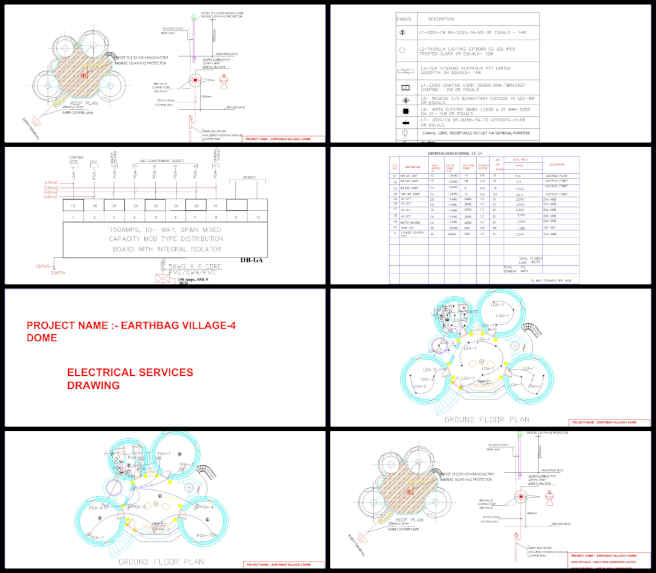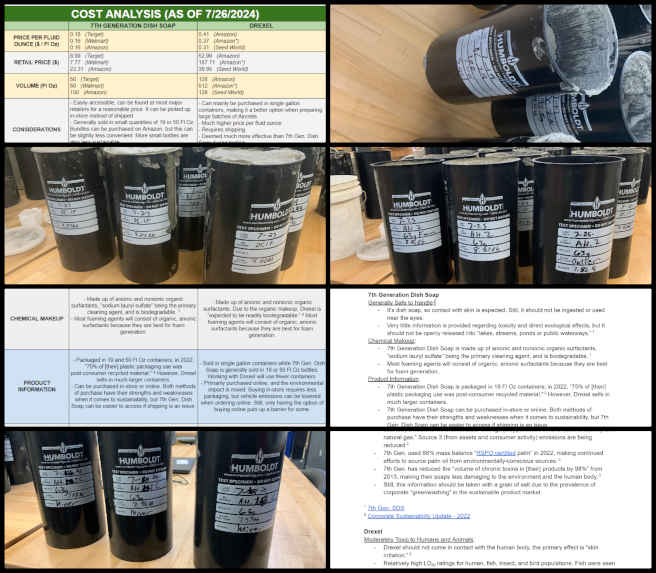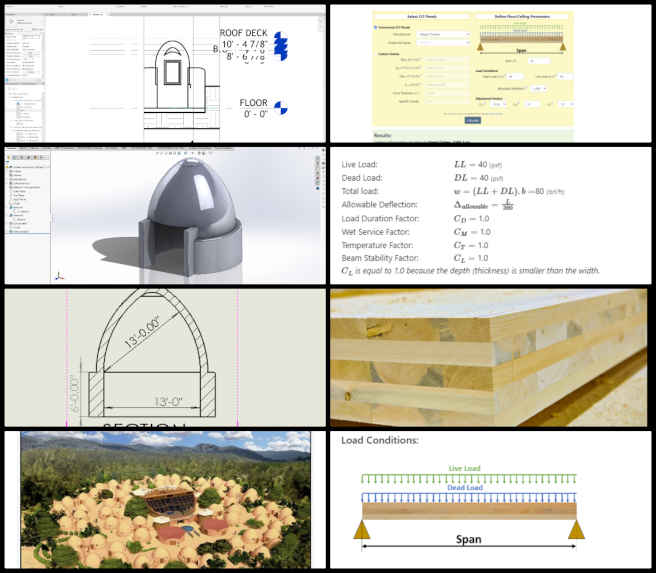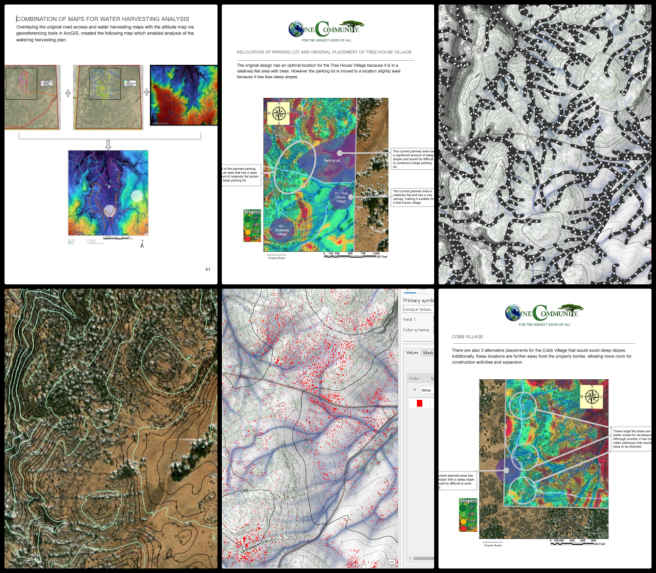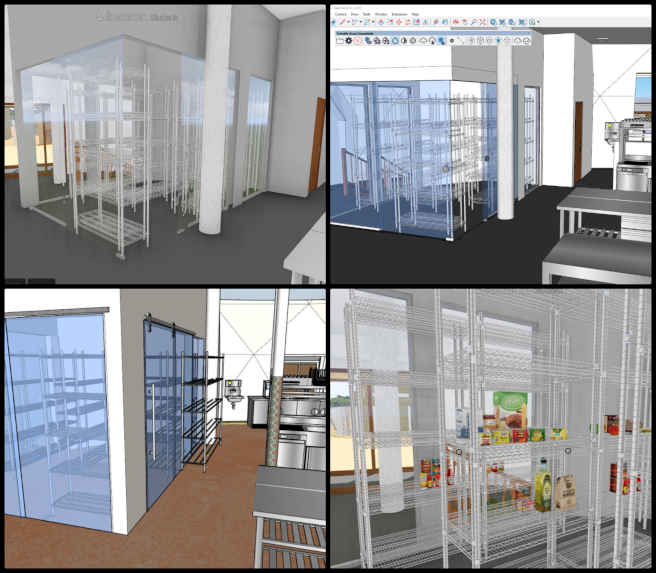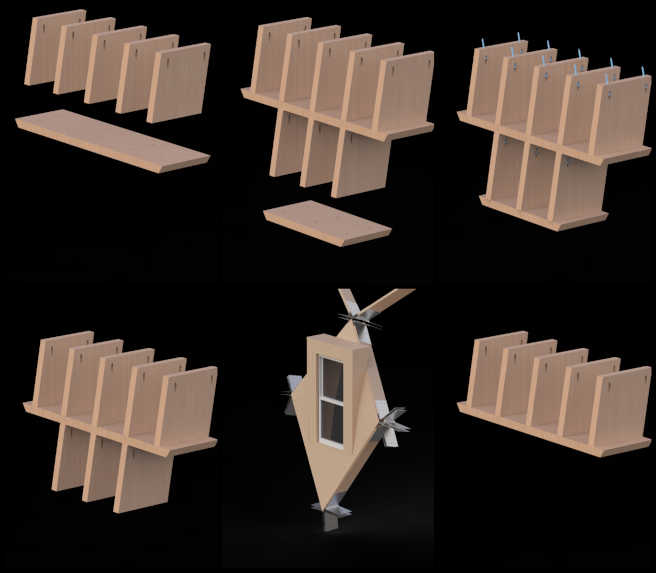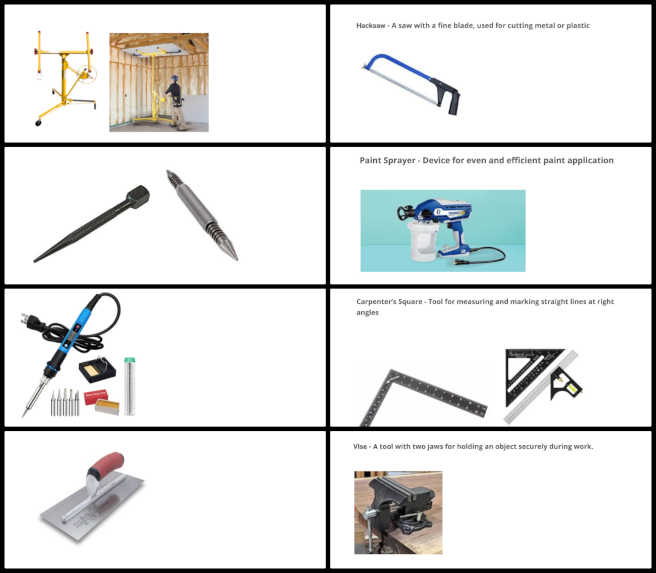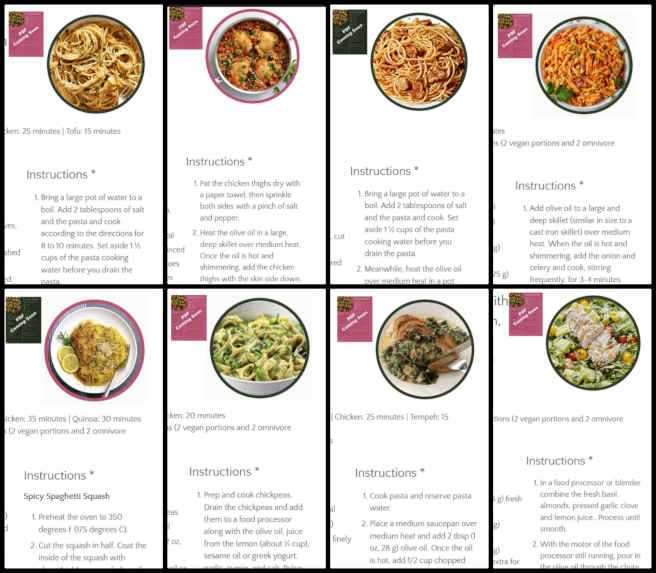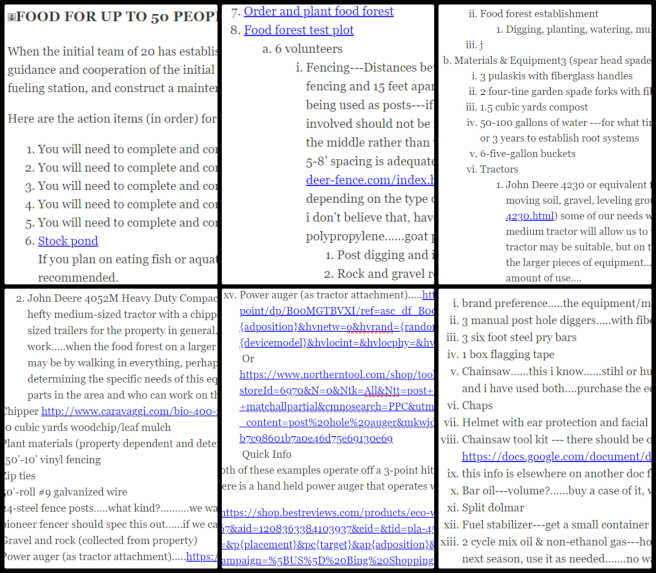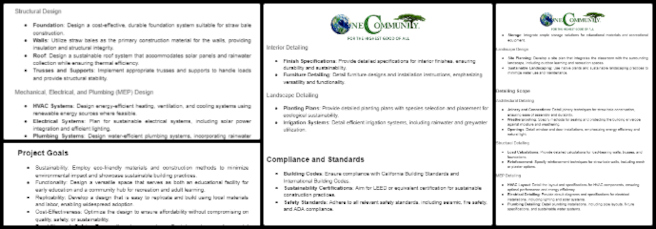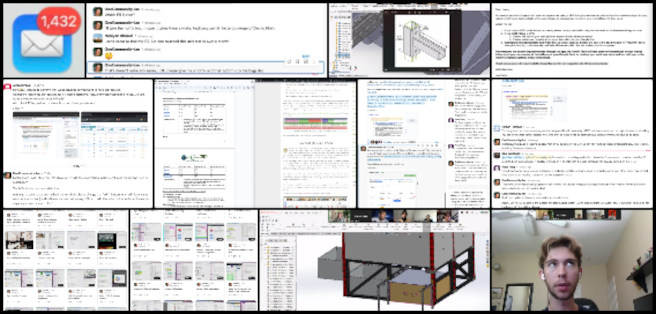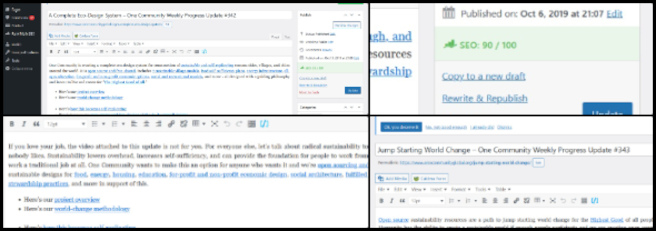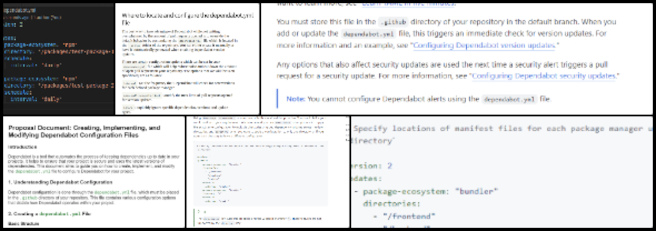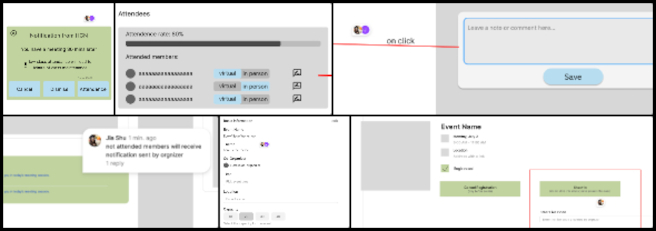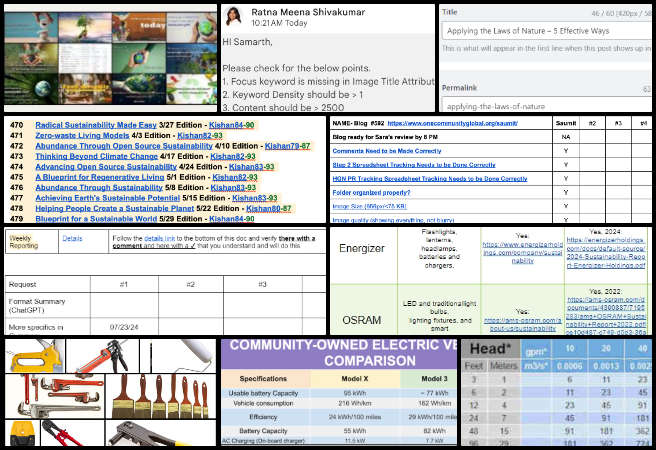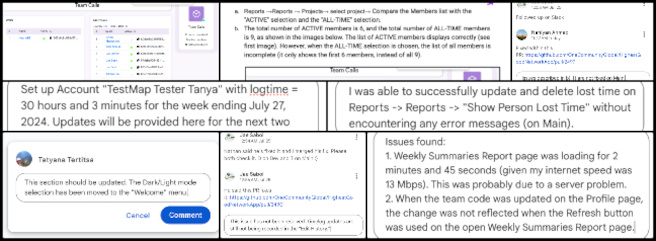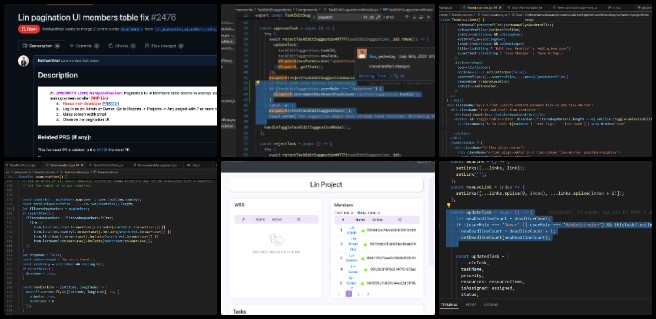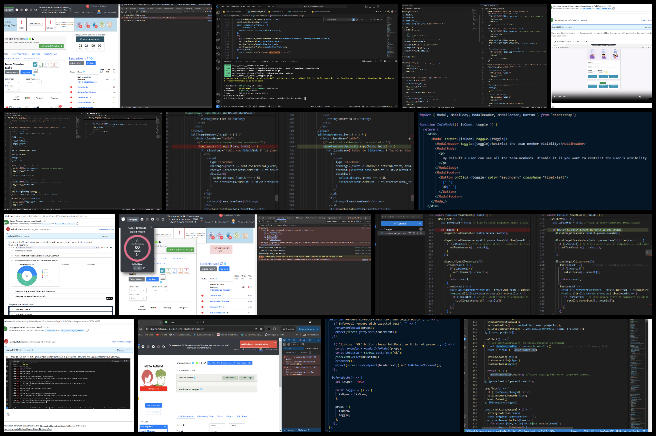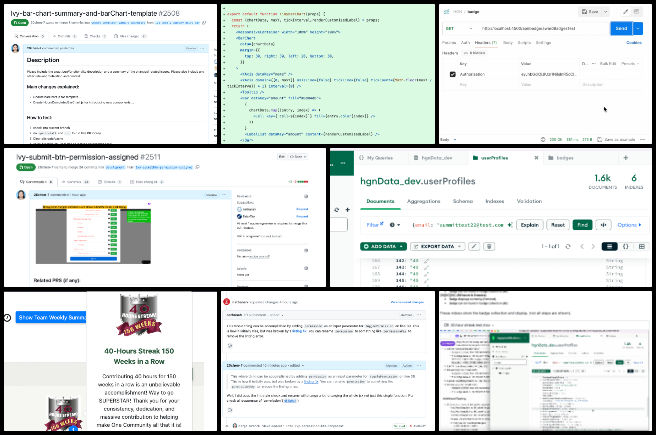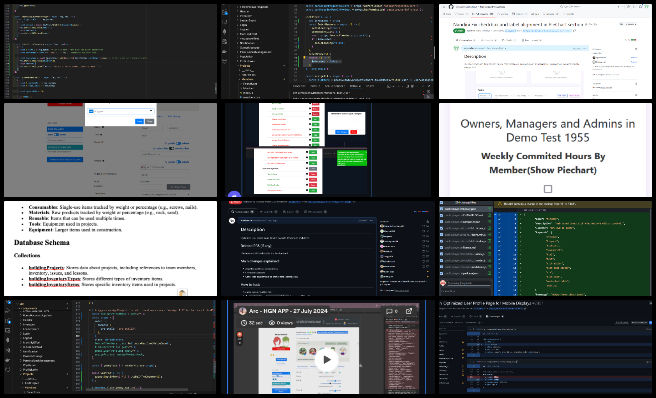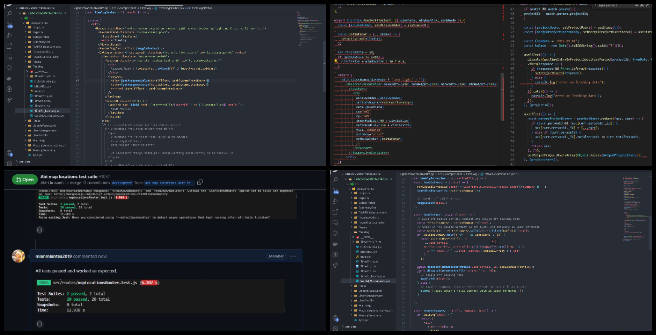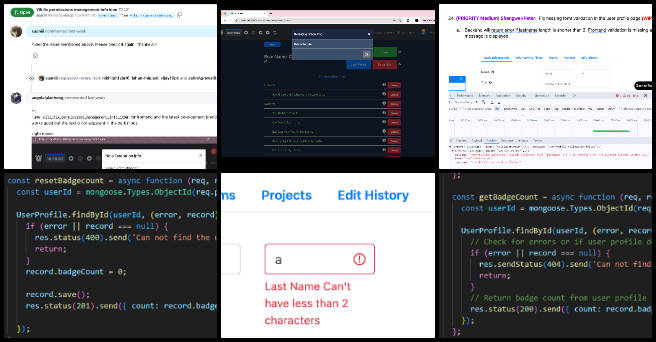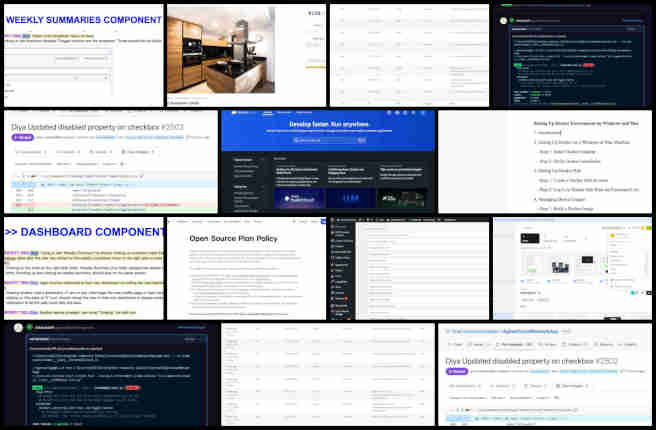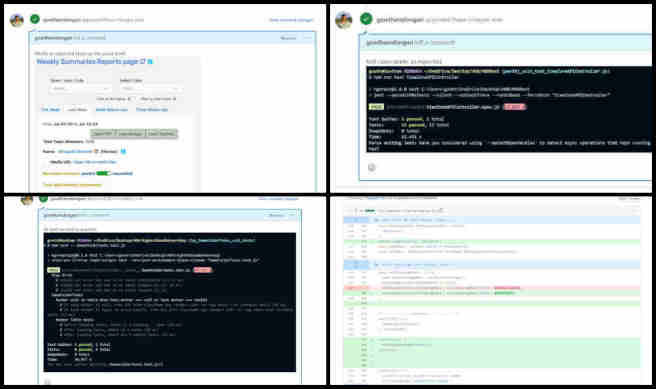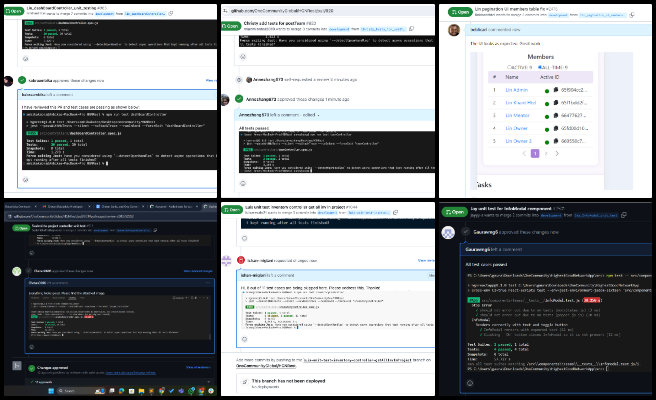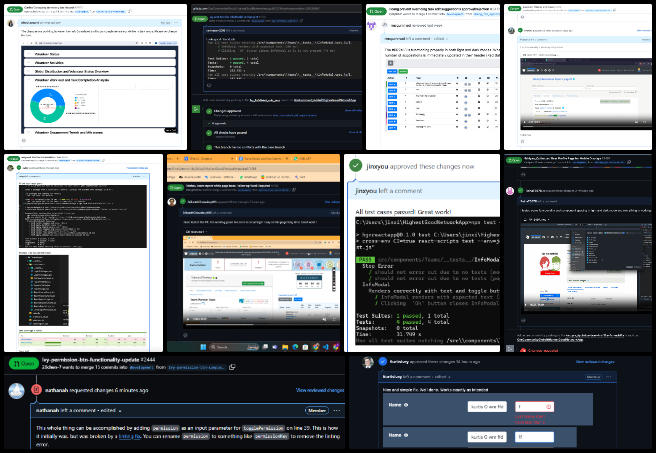Highest Good Eco-community Solutions – One Community Weekly Progress Update #593
At One Community, we are dedicated to providing highest good eco-community solutions to a global audience. Our all-volunteer team is pioneering sustainable approaches to food, energy, housing, education, economics, social architecture, and fulfilled living. By open sourcing and free sharing the complete process, we aim to create a model that becomes self-replicating and fosters global collaboration through teacher/demonstration hubs. Our mission is to regenerate our planet and evolve sustainability for “The Highest Good of All,” ultimately creating a world that works for everyone.
- Here’s our project overview
- Here’s our world-change methodology
- Here’s how this becomes self-replicating
- Here’s how we are open source and free-sharing all the do-it-yourself designs
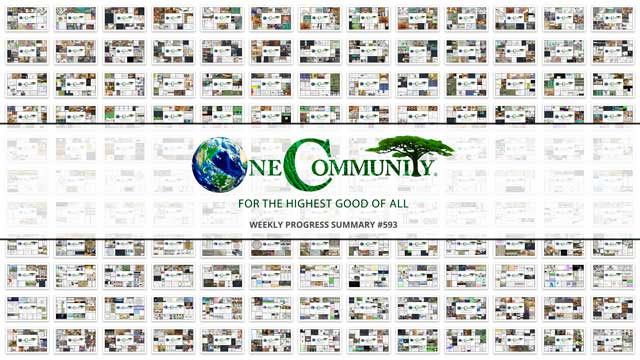
OUR MAIN OPEN SOURCE HUBS
Click on each icon to be taken to the corresponding Highest Good hub page.
One Community’s physical location will forward this movement of highest good eco-community solutions as the first of many self-replicating teacher/demonstration communities, villages, and cities to be built around the world. This is the July 29th, 2024 edition (#593) of our weekly progress update detailing our team’s development and accomplishments:
Highest Good Eco-community Solutions
One Community Progress Update #593
DONATE | COLLABORATE | HELP WITH LARGE-SCALE FUNDING
CLICK HERE IF YOU’D LIKE TO RECEIVE AN EMAIL EACH WEEK WHEN WE RELEASE A NEW UPDATE
YOU CAN ALSO JOIN US THROUGH SOCIAL MEDIA
ONE COMMUNITY WEEKLY UPDATE DETAILS
HIGHEST GOOD HOUSING PROGRESS
 One Community is providing highest good eco-community solutions through Highest Good housing that is artistic and beautiful, more affordable, more space efficient, lasts longer, DIY buildable, and constructed with healthy and sustainable materials:
One Community is providing highest good eco-community solutions through Highest Good housing that is artistic and beautiful, more affordable, more space efficient, lasts longer, DIY buildable, and constructed with healthy and sustainable materials:
- Learn about: Our Upcoming Crowdfunding Campaign
- Learn about the different village models we’ll be building as part of highest good eco-community solutions: 7 Sustainable Village Models
- Visit the open source portals for the first two as highest good eco-community solutions: Earthbag Village OS Hub | Straw Bale Village OS Hub
This week, Adefola Madehin (Electrical Design Specialist) continued his work with Earthbag Village designs. Fola completed the electrical design for the Earthbag Village 4 Dome Project. The key aspects of the design included lighting fixtures, switches, cable wiring, exhaust fans, and kitchen hoods. Socket provisions were made for various appliances such as TVs, AC units, dishwashers, washing machines, and electric cookers. A lightning arrestor installation was specified for surge protection. A main electrical panel schematic diagram was created, showcasing circuit connections and cable sizes. An electrical load schedule was developed, outlining individual and total loads in watts and kVA for the project. This design ensures a safe, efficient, and functional electrical system that meets the required standards and specifications. The Earthbag Village is the first of 7 to be built as the housing component of One Community’s open source model for highest good eco-community solutions. See some of this work in the collage below.
Michaela Silva (Architect) continued working on finalizing the interior of the Earthbag Village 4-dome home design. This week, Michaela began designing the plumbing spaces for the single-family four-dome structure and researched the California plumbing code requirements for fixture sizes to ensure compliance. She compiled specifications for the basis of design for the kitchen appliances and created basic Revit families for each appliance to use in the kitchen layout. The Earthbag village is the first of 7 villages to be built as part of One Community’s open source model for highest good eco-community solutions. See her work in the collage below.
Rizwan Syed (Mechanical Engineer) also continued helping finish the Vermiculture Toilet designs. Rizwan’s contributions are integral to advancing this highest good eco-community solutions initiative. This week, Rizwan focused on design iterations using narrower unistrut channels to support the vermiculture structure. He also completed major sections of the vermiculture draft documentation to update the vermiculture eco-toilet design project homepage on One Community’s website. Specifically, he researched information on commercially available strut channels, both in single pieces and truss configurations, for benchmarking studies. Rizwan evaluated these existing designs to select the most suitable channel brackets and fittings for integration into the vermiculture assembly. He created a multi-member unistrut assembly in SOLIDWORKS with 1.5″ wide support pillars (3ft and 4ft long) to integrate the CAD model into the vermiculture assembly at the intersection of the front and side removable containers. Furthermore, he wrote technical content for the design and assembly of removable containers, replication details, and cost analysis, including detailed work instructions for operating the winch system. The vermiculture toilets and other sustainable human waste processing technologies form the basis of One Community’s open source highest good eco-community solutions model. Here are a few photos showing examples of his work.
AIRCRETE TEAM
The Aircrete Testing Team’s summary, covering their work on Aircrete Compression Testing was managed by John Sullivan (CBU Chemical Engineering Student) and includes Jonathan Crago (Civil Engineering Student), Preston Thompson (Civil Engineering Student), and Tad Matlock (Environmental Science Student). This week, Jonathan worked with his team to create test cylinders of aircrete using three different mixing types: Dome Gaia, Aircrete Harry, and Standard Mix. They varied the levels of foam, soap, cement, and mixing times to achieve a consistent and stable mix. Jonathan also assisted the team in recording all the results onto the Final Doc spreadsheet and the Trial Data doc.
This week, Preston and the team tested more batches and checked on those made the previous week. They experimented with new methods of making aircrete to see if it affected collapsing. Upon opening the successful Domegaia batches, they found air pockets in the mixes, raising concerns about batch failure. The team is considering focusing on Aircrete Harry and the standard mix instead of spending more time on Domegaia. This week, Tad did his part helping create highest good eco-community solutions as he added to his sustainability and cost reports on Aircrete’s two primary foaming agent options: 7th Gen. Dish Soap and Drexel. He then created tables for the two reports, making the information more presentable and direct. Also, he continued to write trial summaries with the current Aircrete team’s data. These aircrete tests contribute to the housing aspect of One Community’s open source model as highest good eco-community solutions. See below for some of the pictures related to this work.
EARTHBAG VILLAGE 4-DOME ROOF TEAM
The Earthbag Village 4-dome Roof Team was managed by Khushboo Parmar (Project Manager) and includes Karthik Pillai (Volunteer Mechanical Engineer) and Yusuf Thanawala (Structural Engineer). The Earthbag village forms the basis of One Community’s open source model for highest good eco-community solutions. This week, Khushboo facilitated the 4-Dome Cluster Roof Team meeting to address communication blockers and ensure project alignment. She interviewed over five candidates for open positions and scheduled five more interviews. Additionally, she introduced the new Plumbing Specialist to the Earthbag Village MEP team and spent time familiarizing herself with AutoCAD files and .dwg files. Khushboo also reviewed the Earthbag Village Plumbing Design and Setup webpage to better understand the MEP project. Meanwhile, Yusuf researched CLT ply construction for remote DIY applications and discussed findings with the team. He began designing the common loft, planning 2D CAD drawings before 3D modeling. Karthik designed domes using new dimensions and generated engineering drawings to address prior inconsistencies. He continued developing his REVIT skills to better support the team. The Earthbag village is an integral part of One Community’s open source model for highest good eco-community solutions. See their work in the collage below.
DUPLICABLE CITY CENTER PROGRESS
 One Community providing highest good eco-community solutions through a Duplicable and Sustainable City Center that is LEED Platinum certified/Sustainable, can feed 200 people at a time, provide laundry for over 300 people, is beautiful, spacious, and saves resources, money, and space:
One Community providing highest good eco-community solutions through a Duplicable and Sustainable City Center that is LEED Platinum certified/Sustainable, can feed 200 people at a time, provide laundry for over 300 people, is beautiful, spacious, and saves resources, money, and space:
- Learn about this building and it’s function and its relation to highest good eco-community solutions: Duplicable City Center Open Source Hub
This week, Chris Blair (GIS Technician/Horticulturist) continued working with GIS data as part of One Community’s Permaculture Design. Chris created a smoother digital elevation model (DEM) and developed a suitability map showing the best areas for solar panel placement. He also created a stream flow map illustrating where water would accumulate and move across the landscape and generated contours using the DEM. Additionally, he continued creating content showcasing improvements to the master plan based on GIS data. Proper property modeling and understanding is a foundational part of One Community’s open source highest good eco-community solutions model. Here are a few photos showing examples of his work.
Clarice Gaw Gonzalo (Architect) continued her work with the Duplicable City Center room designs. This week, Clarice worked on revising some old issues in the overall model, specifically addressing missing shelving. She reviewed recent files but found that most did not contain the pantry shelves. After examining older files, she located a dining space file that included the shelving. She noted several differences between this file and the one imported into the render, such as the pantry’s size and the doors. She added the shelving into the SketchUp file linked to the render and imported it into Lumion. Although the shelves significantly slowed down Lumion, she began filling up the pantry. Clarice plans to discuss with Jae whether these shelves can be replaced. The City Center will be built along with the first of the 7 villages as part of One Community’s open source model for highest good eco-community solutions, which reflects their commitment to innovative highest good eco-community solutions. See some of this work in the collage below.
Nika Gavran (Industrial Designer) continued her work on the Duplicable City Center dormer window installation plans. This week, Nika focused on compiling the order of assembly for the 1st floor dormer window instructions. She created a general list of actions and is rendering them in Keyshot, producing detailed images. She is making sure to leave background off of the renderings, so they can be placed over any background later on. These images will be incorporated into an existing document along with the list of materials. The Duplicable City Center is a foundational part of One Community’s open source highest good eco-community solutions model. See below for some of the pictures related to this work.
HIGHEST GOOD FOOD PROGRESS
 One Community providing highest good eco-community solutions through Highest Good food that is more diverse, more nutritious, locally grown and sustainable, and part of our open source botanical garden model to support and share bio-diversity:
One Community providing highest good eco-community solutions through Highest Good food that is more diverse, more nutritious, locally grown and sustainable, and part of our open source botanical garden model to support and share bio-diversity:
- Learn about the structures: Hoop House Hub | Aquapini & Walipini Open Source Hub
- See what we’ll be growing: Gardens & Hoop Houses | Large-scale Structures | Food Forest | TA
This week, the core team continued updating and expanding the Highest Good Food tools, equipment, materials, and supplies document by adding new items and categorizing tools and equipment into powered and non-powered. The additions included cutting tools (hacksaws and drywall saws), manipulating tools (vises and pipe benders), demolition tools (crowbars and sledgehammers), electrical tools (soldering iron kits and wire strippers), application tools (paint sprayers and drywall trowels), measuring tools (carpenter’s squares), and miscellaneous tools (scissors, awl, nail punches, masonry trowels and brushes, drywall lifts, and even sawhorses with included DIY build instructions. Highest Good Food is an important part of highest good eco-community solutions, contributing to the broader highest good eco-community solutions framework with One Community’s open source plans. See their work in the collage below.
Charles Gooley (Web Designer) focused this week on the Transition Food Self-sufficiency Plan and completed the replacement of placeholder images for recipe pages, with the exception of one vegan pasta image awaiting provision. This week, Charles completed correction of the anchor links in the materials section of the Tools and Equipment for Open Source Construction master page, so that the links are displayed in the address bar. The tools, equipment and materials items that were copied from the Earthbag Village Tools and Equipment page have blank cells that need content to be provided by the authors. Then the items in the second list on the Earthbag Village Tools and Equipment were copied to the materials section of the Tools and Equipment for Open source Construction Village Tools and Equipment master page and anchor links update appropriately. Sustainable food and housing are an important part of creating highest good eco-community solutions with One Community’s open source plans. This work contributes to the development of highest good eco-community solutions and can be seen in the collage below.
Hayley Rosario (Sustainability Research Assistant) continued to update the Highest Good Food page, focusing primarily on the “Garden Establishment and No-Till” section. This week, Hayley completed the “Food for up to 50 people” section, which involved adding links, formatting, and re-reading various items. She encountered several formatting issues, and found items in the EDITs doc that she wishes to review with a core team member. Highest Good food is an important part of highest good eco-community solutions with One Community’s open source plans. See her work in the collage below.
HIGHEST GOOD EDUCATION PROGRESS
 One Community providing highest good eco-community solutions through Highest Good education that is for all ages, applicable in any environment, adaptable to individual needs, far exceeds traditional education standards, and more fun for both the teachers and the students. This component of One Community is about 95% complete with only the Open Source School Licensing and Ultimate Classroom construction and assembly details remaining to be finished. With over 8 years of work invested in the process, the sections below are all complete until we move onto the property and continue the development and open sourcing process with teachers and students – a development process that is built directly into the structure of the highest good eco-community solutions education program and everything else we’re creating too:
One Community providing highest good eco-community solutions through Highest Good education that is for all ages, applicable in any environment, adaptable to individual needs, far exceeds traditional education standards, and more fun for both the teachers and the students. This component of One Community is about 95% complete with only the Open Source School Licensing and Ultimate Classroom construction and assembly details remaining to be finished. With over 8 years of work invested in the process, the sections below are all complete until we move onto the property and continue the development and open sourcing process with teachers and students – a development process that is built directly into the structure of the highest good eco-community solutions education program and everything else we’re creating too:
- Program Overview: Education Open Source Hub
- How the components work together, through highest good eco-community solutions.: How to use the Education for Life Program
- Lesson Plans for Life – Lesson Plans How-to
- Foundations of Outstanding Leaders, Teachers, and Communicators
- Curriculum for Life
- Teaching Strategies for Life
- Learning Tools and Toys for Life
- Evaluation and Evolution
This week, Apoorv Pandey (Mechanical Engineer) continued helping with the engineering details for The Ultimate Classroom part of the Highest Good Education component. He focused on the write-up for the report, expanding his project scope to provide a broader view of the entire project and target goals. He is finalizing the AutoCAD cover page according to the cover sheet guidelines specified by the city of San Diego’s CADD standards. He also made progress with the STAAD Pro roof and truss calculation presentation. The One Community model of combining forward-thinking education with sustainably built classrooms like this is an excellent example of the highest good eco-community solutions. See the collage below for his work.
HIGHEST GOOD SOCIETY PROGRESS
 One Community providing highest good eco-community solutions through a Highest Good society approach to living that is founded on fulfilled living, the study of meeting human needs, Community, and making a difference in the world:
One Community providing highest good eco-community solutions through a Highest Good society approach to living that is founded on fulfilled living, the study of meeting human needs, Community, and making a difference in the world:
- Read the Highest Good society overview: Highest Good Society
- Learn about the model for fulfilled living and sharing: A Day in the Life
- Learn about the 4 economic models: RBE | For-profit | Non-profit | Entrepreneurship
- Learn about our open source community collaboration and management software: The Highest Good Network
This week, the core team completed over 57 hours managing One Community’s volunteer-work review not included above, emails, social media accounts, web development, new bug identification and bug-fix integration for the Highest Good Network software, and interviewing and getting set up new volunteer team members. They also shot and incorporated the video above that talks about the highest good eco-community solutions and how the highest good eco-community solutions is a foundation of the bigger picture of everything One Community is doing. The picture below shows some of this work.
Arun Chandar Ganesan (Volunteer Data Analyst and SEO and Social Media Assistant) focused on improving webpage SEO, reviewing numerous pages, including some previously abandoned ones. He also improved the scores of his previous web pages. Additionally, Arun managed and coordinated the scheduling of posts on One Community’s social media platforms such as Facebook, Instagram, Pinterest, and LinkedIn, and regularly updated the tutorials. This work helps One Community to broaden our reach in social media and spread our message about highest good eco-community solutions. The following images show his work for the week.
Ibrahim Al Balushi (Software Engineer) focused on developing a proposal and tutorial for depandabot.yml files. The proposal document was initiated, detailing the creation, implementation, and modification of depandabot.yml files. Additionally, a tutorial was created to provide an in-depth explanation of these files and was incorporated into the bugs document for reference. This work helps One Community’s mission of highest good eco-community solutions. The picture below shows some of his work.
Jia Shu (UX Designer) collaborated with John to delve into Phase 3 PRD, covering epics, user stories, tasks, and priorities. John provided advice on low-fidelity prototyping, potentially leading to mid-fidelity prototypes. Independent study of web design and iOS/Android design systems was started using resources on Material Design, Android Design, and Apple Design to develop a reliable web structure and optimize user experience. The design system was structured around six epics and their respective user stories, with specific tasks for each epic being defined. The team is halfway through defining the UI system, including colors and icons, and has started design work in Figma with a basic layout for each function. Jia mainly focused on iterating based on John’s feedback and working on the original design for “Logging of Participation” and “Attendance for Each Activity”. This work helps One Community’s mission of the highest good eco-community solutions. The picture below shows some of this work, which aligns with the highest good eco-community solutions vision.
ADMINISTRATION TEAM
The Administration Team’s summary, covering their work administrating and managing most of One Community’s ongoing process for creating highest good eco-community solutions was managed by Sneka Vetriappan (Data Analyst) and includes Hritvik Mahajan (Data Analyst), Jim Zhang (Administrative Assistant), Kishan Sivakumar (Administative Assistant and Software Team Manager), Michael Juma (Administrative Assistant), Mrudula Chavali (Administrative Assistant and Data Analyst), Ratna Meena Shivakumar (Data Analyst and Admin), Ruiqi Liu (Administrative Assistant), Saumit Chinchkhandi (Software Engineer), Vibhav Chimatapu (Data Analyst/Admin Assistant) and Zuqi Li (Administrative Assistant and Economic Analyst). This week, Hritvik completed his training and reviews for four team members from the previous week and received feedback from Ruiqi and Ola on his PR review training process. Jim updated the electric vehicle blog, reached out to dealers for price quotations, and completed the weekly blog update with the housing and food team while reviewing work from new admins.
Kishan worked on optimizing SEO for the weekly update blog, focusing on 20 pages to achieve high SEO scores. Michael did his part helping create highest good eco-community solutions as he prepared summaries for the Reactonauts and Skye software development teams, managed contributors Chris Blair and Prathamesh Jadhav, and handled admin feedback tracking. Mrudula completed her administrative orientation, set up essential apps, and reviewed existing documentation and previous blogs. Ratna managed various tasks for OC Administration, including scheduling interviews, updating and reviewing blogs, and handling social media posts. Ruiqi completed the review process for the Dev Dynasty and Git-R-Done Team, checked blog 592, and assisted members with their bio announcements while continuing her work on the NEW Light Bulb Company Benchmarking Excel.
Saumit did his part helping create highest good eco-community solutions as he began PR training with new team code, created personalized responses, and worked on the HR training document and Software Admin testing document. Vibhav reviewed PR Team’s work, provided feedback, created summaries and collages, and continued on-webpage SEO optimization. Zuqi organized weekly summaries for the Graphic Design Team and Alpha Team, reviewed work and provided feedback for blogs, and updated blog justifications. One Community’s model for creating highest good eco-community solutions includes developing and maintaining a supportive administration team like this. You can see the work for the team in the image below.
GRAPHIC DESIGN TEAM
The Graphic Design Team’s summary was managed by Zuqi Li (Administrative Assistant and Economic Analyst) and included Ashlesha Navale (Graphic Designer), Helen Ma (Graphic Designer) and Junyuan Liu (Graphic Designer, UI/UX Designer), covering their work on graphic designs for highest good eco-community solutions. This week, Ashlesha worked on creating three volunteer announcements, producing three bio images and three announcement images. Additionally, she researched and curated a collection of nature-based background images and various theme-based images for social media content, creating five images titled Self-Responsibility, Self-Sustainable City Model, Self-Thrive, Sustainability-Idea to Action, and Sustainability-Action. Helen completed her training program, established Dropbox and Google Drive for future collaboration with One Community, and familiarized herself with the organization’s working system. She studied artworks produced by other designers to understand One Community’s brand message and identity. Helen began working on assigned tasks, creating feature images for various pages, and completed three artworks, each corresponding to a different page. Junyuan focused on researching and completing two social media images related to One Community. Additionally, he reviewed and developed UI/UX content for HGN Phase 3, analyzing content from HGN Phase 2 and assessing the current progress of HGN Phase 3. See the Highest Good Society pages for more on how this contributes to highest good eco-community solutions. See the collage below to view some of their work.
HIGHEST GOOD NETWORK PROGRESS
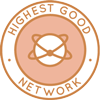 One Community providing highest good eco-community solutions through open source Highest Good Network® software that is a web-based application for collaboration, time tracking, and objective data collection. The purpose of the Highest Good Network is to provide software for internal operations and external cooperation. It is being designed for global use in support of the different countries and communities replicating the One Community sustainable village models and related components.
One Community providing highest good eco-community solutions through open source Highest Good Network® software that is a web-based application for collaboration, time tracking, and objective data collection. The purpose of the Highest Good Network is to provide software for internal operations and external cooperation. It is being designed for global use in support of the different countries and communities replicating the One Community sustainable village models and related components.
This week, the core team continued their work on the Highest Good Network PRs testing, confirming the fixed PRs. The PRs include edit button functionality on narrow screens (PR #2422), improved resource list loading on tasks (PR #2397), corrected project total hours discrepancies on the Project Report page (PR #2315), resolved dark mode menu text color issue (PR #2413), enabled admin/owner approval of suggested task changes (PR #2413), implemented immediate team deletion (PR #2214), fixed duplicate team entries (PR #2495), added a delete final day button (PR #2366), and improved Projects and Teams page formatting (PR #2123). Lost time updates were tested on the Reports page. Unresolved issues include the need for a refresh button on the Weekly Summaries Reports page (PR #2316) and dark mode implementation on the Profile page (PR #2295). Additionally, a new issue was created regarding incomplete member lists when the ALL-TIME button is selected, and a suggestion was made to display a warning for duplicate team names during creation. Progress on the X hours in X weeks streak badges feature continues, with a test account established for tracking logtime. See the Highest Good Society and Highest Good Network pages for more on how this relates to the highest good eco-community solutions. The collage below shows some of their work in advancing the highest good eco-community solutions.
ALPHA SOFTWARE DEVELOPMENT TEAM
This week, the Alpha Team’s summary, covering their work on the Highest Good Network software was managed by Lin Khant Htel (Frontend Software Developer) and includes Anand Seshadri (Software Engineer) and Logeshwari Renu (Software Engineer). The Highest Good Network software is how we will manage and measure our processes for highest good eco-community solutions across our social architecture, construction, production, and maintenance processes. Anand retested PR 1955 and confirmed that the issue with the Work Breakdown Structure (WBS) tasks has been resolved, allowing for the creation, addition, and editing of tasks that now correctly reflect in the assigned volunteer user accounts. He also worked on a feature from the HGN Bugs list to enable users to suggest changes in time, increasing the changes tracker on the dashboard. Anand added the handleApprove function to verify user roles, created the incrementDashboardTaskCount action, updated the reducer to handle the INCREMENT_TASK_COUNT action, and ensured the Dashboard component displays updated task counters. Lin focused on fixing the pagination UI for members in PR 2476, with changes appearing satisfactory. He also reviewed the weekly summaries, photos, and videos related to the tasks of his team Alpha members. Logeshwari addressed an issue causing a blank page to display when searching for a location on the team location page. She updated the teamLocations.js file to resolve the error “Uncaught TypeError: Assignment to constant variable” by reassigning mapMarkers to filteredMapMarkers when the search filter is applied. Additionally, a loading spinner was added to indicate the loading state of map data. See the Highest Good Society and Highest Good Network pages for more on how this relates to highest good eco-community solutions. View some of the team’s work in the collage below.
BINARY BRIGADE SOFTWARE DEVELOPMENT TEAM
The Binary Brigade Team’s summary overseeing advancements in the Highest Good Network software was managed by Min Sun (Software Engineer) and includes Aaryaneil Nimbalkar (Software Developer), Huijie Liu (Software Engineer), Peizhou Zhang (Software Engineer), Sai Sarath Kumar Alavakonda (Software Engineer), Sandhya Adavikolanu (Software Developer) and Vijay Anand Pandian (Full Stack Software Engineer). The Highest Good Network software is how we’ll be managing and objectively measuring our process for highest good eco-community solutions through our social architecture, construction, production, and maintenance processes.
This week, Aaryaneil added additional test cases to the aaryaneil-unit-test-ProjectTable to test for dark mode hover functionality, and updated the pull request to include the latest changes. Test cases in the Members/Members.jsx file were fixed in preparation for a new pull request. The following pull requests were reviewed: NandiniYelmela’s fix for project report UI issues (#2480), Vishav’s fix for timelog page UI issues for 375px and up (#2488), Howie’s fix for the team scroll bar issue (#2492), TimeLogger for BMdashboard by Howie (#1041) and Kyo (#2494), Peizhou’s fix for the assigning blue square with a future date issue (#2496), Nahiyan’s optimization of the User Profile Page for mobile displays (#2497), and Jay’s unit test for the InfoModal component (#2501). Additionally, he completed the unit tests for the LoginPrivileges component with test cases for rendering radio buttons, checking if the selected input is correct, ensuring the input change handler is called, verifying the default selected input, testing radio button interactions, handling the scenario where no role is selected, and testing multiple renders to ensure stability. A pull request was also created for the LoginPrivileges component. Huijie continued to work on her tasks. For the submitted PR, she helped team members for instructions to get token for testing. Huijie tested on the reported problem, modified the code. She currently got error when solving the merge conflicts. She also rewrote her code using chart.js and react-chart js-2 for chart components as required by the team, contributing to the highest good eco-community solutions. Min completed the task of adding manager icons to the task tab and moved on to refining the team report page and its API, improving report generation speed. He also did weekly meetings and compiled team summaries. Peizhou worked on solving the issue of the duplicate display of the team entities under the Teams table of the User Profile. The issue is due to the repetitive code in the source file, and by properly deleting the duplicate code, this issue can be solved. The team’s work continues to align with the highest good eco-community solutions, ensuring our updates and fixes contribute to a more sustainable and efficient development environment.
Sai focused on extracting active and inactive members from the teams component. Work was done to add a new column in the team table within the UI, aiming to display the count of active members in each team. Modifications began on the teammemberpopup.jsx component to facilitate this count. A blocker was encountered in retrieving the active members count, necessitating further work in the next session. The total members count was added to the members popup, although fetching data for the new active members column was not completed; the total is now displayed in the popup instead. Refactoring was done to the code, including the removal of irrelevant comments. This aligns with our goal of integrating highest good eco-community solutions by optimizing team management processes. Sandhya began by learning about the intricacies of integrating badge data into the Weekly Summaries Dashboard. With this foundation, she focused on enhancing the badge component implementation by uploading and reviewing various files such as AssignBadge.jsx, Badge.jsx, and BadgeManagement.jsx to ensure proper functionality and integration of badge assignment, display, and management. After this, she proceeded with the implementation phase. This involved enhancing files related to the Weekly Summaries Dashboard, including WeeklySummariesReport.jsx and WeeklySummariesReport.css, to display badge data correctly on the Weekly Summaries Report page. Furthermore, Sandhya verified the backend API endpoints to ensure proper data retrieval and error management, significantly improving data accuracy and user engagement. Vijay worked on moving the filter section, search, select date range, and view total project/people/team report into a separate component (PR #2510). Additionally, reviews were completed for PRs that included a fix for assigning a blue square for future dates (PR #2496), test cases for the InfoModalComponent (PR #2501), and changes for displaying the total member count in the members modal on the teams page (PR #2506). This work is part of our commitment to highest good eco-community solutions. See the Highest Good Society and Highest Good Network pages for more on how this relates to highest good eco-community solutions. View some of the team’s work in the collage below.
BLUE STEEL SOFTWARE DEVELOPMENT TEAM
The Blue Steel Team’s summary, presenting their work on the Highest Good Network software was managed by Jingyi Jia (Software Engineer, Team Manager), and includes Imran Issa (Software Developer), Jay Srinivasan (Software Engineer), Parth Rasu Jangid (Software Developer), Ramakrishna Aruva (Software Engineer), Tzu Ning “Leo” Chueh (Software Engineer), and Vishavdeep Kaur (Full stack Developer). The Highest Good Network software is how we’ll be managing and objectively measuring our process for the highest good eco-community solutions through our social architecture, construction, production, and maintenance processes. This week, Parth reviewed three PRs: 1044, 2496, and 2497, completed his integration test for the timeZoneAPIController.js, and refactored his codebase, resulting in PR 1027 being marked as DO NOT MERGE. He also created a new PR combining unit and integration tests. Vishavdeep addressed a UI issue with PR#2488 and reviewed PRs 2497 and 2496, providing feedback and testing PR-2503. Tzu Ning resolved a timer functionality error in the Timer component by ensuring correct userId assignment in WebSocket messages. Jingyi made progress on fixing memory leaks in the userProfile page by addressing updates to unmounted components and reviewed five high-priority PRs: 2496, 2431, 2476, 2488, and 2497. Imran fixed a frontend bug on the Rehireable status and resolved additional backend issues, completing his assigned task. Ramakrishna identified new bugs, reviewed a PR, and corrected reviews related to a previous task. He began a new task and corrected misuse of the useMemo function in the team report page. Lastly, Jay reviewed summaries and media for Team Blue Steel and wrote unit tests for the InfoModal component, ensuring its correct rendering and presence management in the document, which he followed up with a new PR. See the Highest Good Society and the Highest Good Network pages to learn more on how their work contributes to highest good eco-community solutions. See below to view images of their work.
CODE CRAFTERS SOFTWARE DEVELOPMENT TEAM
The Code Crafters Team’s summary, covering their work on the Highest Good Network software, was managed by Summit Kaushal (Backend Software Developer) and includes Xiaoyu (Ivy) Chen (Software Engineer). The Highest Good Network software is how we’ll manage and objectively measure our process for the highest good eco-community solutions through our social architecture, construction, production, and maintenance processes. Ivy addressed async loop and await lint style issues, and participated in meetings with Summit and her team to discuss recent tasks and monitor progress. Ivy met with Harsh regarding the new API she built. She checked the bug documentation, tested the setup link, and managed leader team permissions and badge management. Ivy fixed a bug related to the manage permission submit button, responded to request changes from Nathanah, and resolved a lint error by renaming and reverting changes. Additionally, she picked up a bug related to the report page where inactive members were not displayed correctly and began investigating and defining the issue. Summit addressed and resolved several issues with Postman requests, specifically troubleshooting GET request errors that resulted in 404 responses. They identified an unrelated issue with the .env file and resolved it. Summit noticed that running ‘npm run build’ reset changes to the badgeRouter file, which might be related to building configurations. They fixed the Postman issue by deleting changes, performing an ‘npm install’ running the build, and restarting the debugger. See the Highest Good Society and Highest Good Network pages for more on how this relates to the highest good eco-community solutions. The collage below shows some of this work.
DEV DYNASTY SOFTWARE DEVELOPMENT TEAM
The Dev Dynasty Team’s summary, covering their work on the Highest Good Network software, was managed by Ruiqi Liu (Administrative Assistant) and includes Akshit Sharma (Software Engineer), Angela Cheng (Software Engineer), Anuj Vakil (Software Engineer), Jatin Agrawal (Software Engineer), Howie Miao (Software Engineer), Nandini Yelmela (Software Engineer) and Nahiyan Ahmed (Full Stack Software Developer). The Highest Good Network software is how we’ll manage and objectively measure our process for the highest good eco-community solutions through our social architecture, construction, production, and maintenance processes.
Akshit worked on understanding and resolving issues in PR #1750, focusing on fixing errors in the members.test.jsx file and resolving network errors, resulting in five test cases now passing. He also addressed the issue of empty space where the pie chart should appear for projects with zero members and zero hours in PR #2509 by making changes to PieChartByProject.jsx and WbsPieChart.jsx. This work contributes to the highest good eco-community solutions by enhancing the visual representation and functionality of the project data. Angela focused on completing the remaining PR reviews (PR# 2410, 2378, 2335, 2326, 2342, 2332, 1027, 2276, 2309, 2497) for the team, addressing 9 out of 10 PRs, with the last one scheduled for completion on July 27th. Her work included investigating and understanding target bugs, exploring the Badge component, its selected feature, and badge assignment, along with concepts of mapDispatchToProps and mapStateToProps in Redux. Angela’s efforts are pivotal in aligning with the highest good eco-community solutions by ensuring the robustness and reliability of the codebase.
Anuj worked on the sort functionality and addressed site issues. The inventory functionality has not yet been implemented and is planned for phase two. He reviewed the documentation to understand the functionality better and required more time to grasp its workings and requirements before proceeding with the implementation. Jatin focused on various pull requests and bug fixes. He completed work on PRs 2497, 2496, 2488, 2478, 2476, 2469, 2494, 2492, 2480, and 2451. In addition to these tasks, Jatin is halfway through adding the edit button on the user management page. The button is visible on the page, and on click, the text is replaced with an input element.
Nahiyan created three pull requests: PR 2497, which optimizes the user profile page for mobile and tablet displays; PR 2491, which fixes the scroll bars for the leaderboard and timelog to appear only on mobile displays; and another pull request addressing the timelog components’ scroll bar functionality on mobile displays. He also reviewed pull requests related to his mobile optimization project. Nandini addressed the misalignment of checkboxes and labels in the pie charts section of a project report, resulting in a visually organized layout. She reviewed the existing codebase, updated the CSS and JSX for proper alignment, and raised PR#2505 to resolve the issue. Howie worked on the scrollbar bug, discussed it with Nahiyan, and decided to adopt a different, simpler approach. He completed the bug fix and learned about creating pull requests, formatting for One Community, and task submission. Howie proceeded to identify more bugs on various parts of the webpage and started working on fixing the end date descriptions and setting up a new volunteer account for testing purposes. See the Highest Good Society and Highest Good Network pages for more on how this relates to the highest good eco-community solutions. The collage below shows some of this work.
EXPRESSERS SOFTWARE DEVELOPMENT TEAM
The Expressers Team’s summary, covering their work on the Highest Good Network software, was managed by Christy Guo (Software Engineer) and includes Mohammad Abbas (Software Engineer). The Highest Good Network software is how we’ll manage and objectively measure our process for highest good eco-community solutions through our social architecture, construction, production, and maintenance processes. This week, Christy completed some PR reviews on the front end for PRs 2497, 1037, 1044, and 965. She verified the changes and solicited peer reviews. She also spent time working on fixing the error in the backend API routings to integrate with the front end. Mohammad worked on the hour delay task. He focused on identifying and resolving issues to improve the project’s functionality. See the Highest Good Society and Highest Good Network pages for more on how this relates to highest good eco-community solutions. See the collage below for the team’s work this week.
MOONFALL SOFTWARE DEVELOPMENT TEAM
The Moonfall Team’s summary, covering their work on the Highest Good Network software was managed by Lu Wang (Software Engineer) and includes Jiadong Zhang (Volunteer Software Engineer), Shrada Chellasami (Software Engineer) and Yili Sun (Software Engineer). The Highest Good Network software is how we’ll be managing and objectively measuring our process for highest good eco-community solutions across our social architecture, construction, production, and maintenance processes. This week, Jiadong focused on replacing a badge on the dashboard. He recreated his branch and moved all the changes from the previous one to ensure everything worked correctly. Jiadong carefully copied both frontend and backend code. Shrada worked on fixing the missing form validation in the user profile page by addressing an issue where the backend would return an error if the last name’s length was shorter than two characters, but the frontend did not display a warning message. She also contacted peers regarding UI fix issues, resolved their suggestions, and pushed the updated code. Yili fixed the problems identified in the PR comments for Permissions Management info icons, specifically addressing the issue where the text on the pop-ups was not visible in dark mode. Additionally, she resolved the pipeline issue for the PR of Permissions Management info icons. Yili also continued working on addressing other UI issues on the User Management Page, focusing on the following tasks: adding spacing to the right of the show button, ensuring the dropdown filter next to the show button has a darker background when active, resizing the search input for better visibility at 641px and 491px, adding spacing between top items and properly left-aligning them at 375px, reducing font size for the user table after 750px to minimize side scrolling, adding a bordered table and placeholders to the setup invitation history modal, ensuring full visibility of placeholders in the Setup New User modal at 375px, and reducing excessive space beneath labels in the reset password modal. These updates contribute to our overall goal of advancing highest good eco-community solutions. See the Highest Good Society and Highest Good Network pages for more on how this relates to highest good eco-community solutions. Below is a collage for the team’s work.
REACTONAUTS SOFTWARE DEVELOPMENT TEAM
The Reactonauts Team’s summary, covering their work on the Highest Good Network software was managed by Changhao Li (Software Engineer) and includes Dhairya Mehta (Software Engineer), Diya Wadhwani (Software Developer), Hetvi Patel (Software Engineer), Nikhil Pittala (Software Engineer), Peterson Rodrigues dos Santos (Full-Stack MERN Stack Developer), and Yash Agrawal (Software Engineer). The Highest Good Network software is how we’ll be managing our highest good eco-community solutions across social architecture, construction, production, and maintenance processes. This week, Changhao managed the team summary and worked on unit test development, team management, and resolving development-related issues. He focused on reviewing tests for `timeentry.jsx`, analyzing updates on the development branch, and comparing these changes with local unit tests to ensure coverage of all edge cases. Changhao also hosted the weekly team meeting.
Dhairya addressed the “Fix Projects find user function” task, identifying the root cause and developing a sort and search function to optimize user assignment processes within the project section.
Diya tackled a bug caused by different team roles affecting team information lookup, updated the report, addressed a bug with the ‘Tangible’ checkbox, raised PR #2502, and linked the Dropbox folder for the week.
Hetvi worked on the One Community live website, debugging form emails, updating the “From” field, and fixing a bug preventing email submissions. She cleared the server-side cache, conducted tests, added new fields to the email template, answered testing questions, and managed search engine dropdown data entries.
Nikhil completed 12 PR reviews covering front-end and back-end work and unit testing. He ensured design and functionality met project requirements, evaluated server-side logic, database interactions, and API integrations, and identified and addressed bugs.
Peterson resolved two bugs: one on the dashboard page involving the “Leaderboard” table and “Total Time” column, and another on the user profile page in the “Teams” tab.
Yash integrated wildcard matching for search results, indexed location search results using MongoDB, expanded the payment platform, integrated the Google Location API, added the Google Maps SDK for Node.js, and reviewed the application process for changes needed for the Netlify move. See the Highest Good Society and Highest Good Network pages for more on how this relates to highest good eco-community solutions. See the collage below for the team’s work this week.
SKYE SOFTWARE DEVELOPMENT TEAM
The Skye Team’s summary, covering their work on the Highest Good Network software was managed by Luis Arevalo (Software Engineer) and includes, Gowtham Dongari (Software Engineer). The Highest Good Network software is how we’ll be managing our highest good eco-community solutions social architecture, construction, production, and maintenance processes. This week, Gowtham worked on the HGN Software Development project, addressing issues related to the user time log page. He fixed the problem of the time log page not updating for the logged-in user and ensured it reflected the correct user data. He also tested Pull Requests #2462 from the HighestGoodNetworkApp repository, #1027 from the HGNRest repository, and PR #2469 to verify that all changes were functioning correctly and the system remained stable post-integration. The technical aspects of the user time log issue were resolved using the useEffect hook in React to update the user page based on changes in user state or session details.
Luis tested the inventoryController, completed unit testing for transferInvById, and troubleshooted the missing generate summary intro button. He identified the possible cause for the missing button and reviewed a previous PR to resolve a 422 issue encountered when posting and editing a duplicate warning. See the Highest Good Society and Highest Good Network pages for more on how this relates to highest good eco-community solutions. See the collage below for the team’s work this week.
SOFTWARE PR REVIEW TEAM A-I
The PR Review Team’s summaries for team members’ names starting with A-I and covering their work on the Highest Good Network software was managed by Vibhav Chimatapu (Data Analyst/Admin Assistant). The Highest Good Network software is a foundation of what we’ll be using to measure our results for highest good eco-community solutions. This week’s active members of this team were: Ambika Kabra (Volunteer Software Engineer), Angela Cheng (Full Stack Developer), Anne Zhang (Software Engineer), Carl Bebli (Software Engineer), Chetan Sunku (Software Engineer), Gaurav Setty (Software Engineer), Gmon Kuzhiyanikkal (Software Engineer), and Ishan Miglani (Software Engineer). They reviewed all the Highest Good Network PRs (Pull Requests) shared in this week’s update. Learn more about how the Highest Good Network will measure and assist in highest good eco-community solutions in the Highest Good Network open source hub. The collage below shows a compilation of the work from this team.
SOFTWARE PR REVIEW TEAM J-R
The PR Review Team’s summary for team members’ names starting with J-R and covering their work on the Highest Good Network software was managed by Saumit Chinchkhandi (Software Engineer). The Highest Good Network software is a foundation of what we’ll be using to measure our results of highest good eco-community solutions. This week’s active members of this team were: Jinxiong You (Software Engineer), Kurtis Ivey (Software Engineer), Nathan Hoffman (Software Engineer), Niketha Anand (Software Engineer), Olga Yudkin (Software Engineer), Pranay Netha Guda (Software Engineer), Rama Srikanth Kotaru (Software Engineer), Ramya Ramasamy (Full Stack Developer), Reina Takahara (Software Developer) and Rohith Gummadi (Software Engineer). They reviewed all the Highest Good Network PRs (Pull Requests) shared in this week’s update. Learn more about how the Highest Good Network will measure and assist in highest good eco-community solutions in the Highest Good Network open source hub. The collage below shows a compilation of the work from this team.
SOFTWARE PR REVIEW TEAM S-Z
The PR Review Team’s summary for team members’ names starting with S-Z and covering their work on the Highest Good Network software was managed by Olawunmi “Ola” Ijisesan (Administrative and Management Support) and Samarth Urs (Administrative Assistant and Data Analyst). The Highest Good Network software is a foundation of what we’ll be using to measure our results of highest good eco-community solutions. This week’s active members of this team were: Sailavanya Narthu (Software Engineer), Shadhrush Swaroop (Full Stack Software Engineer), Sourav Girish Walke (Full Stack Engineer), Vamshi Kusa (Software Engineer), Varun Kumar Reddy Guntaka (Software Engineer), Xiao Wang (Software Engineer), Yiyun Tan (Software Engineer) and Zijie Yu (Software Engineer). They reviewed all the Highest Good Network PRs (Pull Requests) shared in this week’s update. Learn more about how the Highest Good Network will measure and assist in highest good eco-community solutions in the Highest Good Network open source hub. The collage below shows a compilation of the work from this team.
AND WE PRODUCED THIS WEEKLY UPDATES BLOG – CLICK HERE TO SUBSCRIBE
FOLLOW ONE COMMUNITY’S PROGRESS (click icons for our pages)
INVESTOR PAGES
 One Community
One Community


